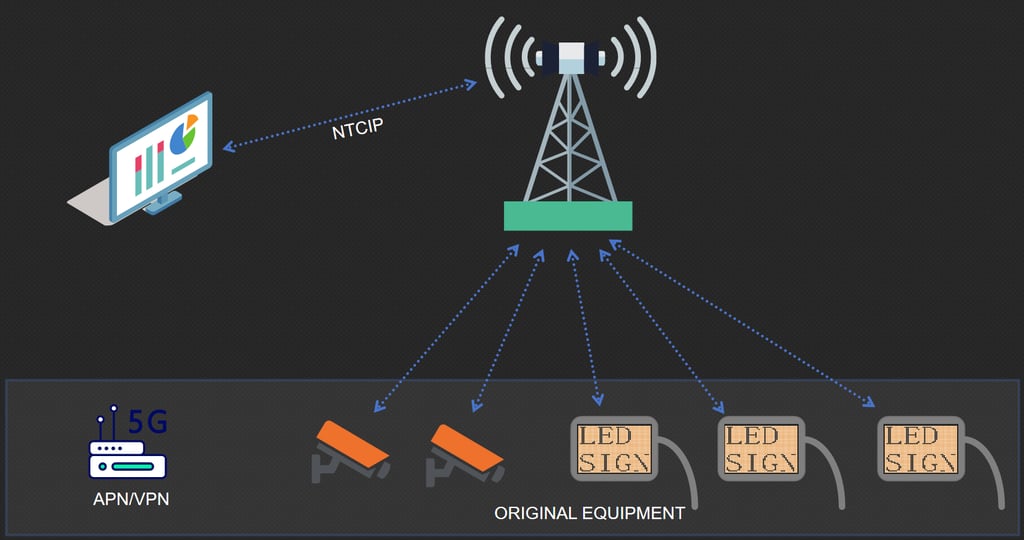How to remote control via 4G based on NTCIP protocol
How to achieve remote control via 4G based on NTCIP protocol
smart traffix.Daniel
5/24/20252 min read


🚦To achieve remote control via 4G using the NTCIP protocol (National Transportation Communications for Intelligent Transportation System Protocol), you need to understand and integrate several key components: NTCIP stack implementation, 4G connectivity, device firmware support, and server communication architecture.The following are the key technical points you must focus on to achieve this goal:smarttraffix.com
Why Do Devices Using the NTCIP Protocol Need a Fixed Public IP or a Fixed Internal IP Within a VPN?
In intelligent transportation systems, NTCIP (National Transportation Communications for ITS Protocol) is widely used to remotely control field devices such as Variable Message Signs (VMS) and traffic signal controllers. NTCIP is typically implemented over SNMP, which is based on UDP—a connectionless communication protocol. This introduces a key networking challenge: the remote server cannot directly access the device unless the device has a stable and reachable address.
UDP is a connectionless protocol, meaning there is no session or handshake between client and server. As a result, the server cannot "remember" or maintain communication paths like it can with TCP. If the server wants to send a command to a field device, it must already know the device’s IP address. However, devices that connect via 4G networks are usually behind NAT (Network Address Translation), meaning they are assigned private IP addresses that are not directly accessible from the public internet.
To ensure reliable remote access, there are two common solutions:
Assign a fixed public IP address to the device: This ensures the server can always reach the device using its known IP.
Deploy a VPN network: Devices join a virtual private network where they are assigned fixed internal IP addresses, enabling secure and stable access from the server.
Both solutions ensure the device has a consistently reachable IP address, which is a fundamental requirement for successful NTCIP (UDP) communication.
In contrast, with TCP-based protocols (such as MQTT or a custom TCP control protocol), the device can initiate a connection to the server, and maintain a persistent session. Even behind NAT, this allows the server to send commands back over the established connection without needing the device to have a public IP.
Therefore, when using the NTCIP protocol over UDP for remote control, it is essential for the device to have either a fixed public IP address or a fixed internal IP address within a VPN. This is the foundation for stable system operation and reliable command delivery.
How to solve this problem, make the use of NTCIP easier, and remove the cost issues caused by APN/VPN and static IP?
To address the limitations of traditional NTCIP communication over UDP—such as the requirement for a fixed public IP address or complex VPN setup—we (smarttraffix.com)have developed a TCP-based NTCIP solution. By leveraging a persistent, connection-oriented architecture, our implementation allows field devices to initiate outbound connections to the central server, even behind NAT or with dynamic IP addresses. This ensures secure, stable, and scalable remote control without the need for fixed IPs, significantly simplifying deployment and improving reliability in real-world environments.
If you are interested in our ideas, we would be happy to discuss them with you further.
You're welcome to get in touch with us at any time.
Contact
If you have any comments, questions, suggestions or complaints about traffic managing solution, please send us an e-mail at the following address:
© 2025 smarttraffix. All rights reserved. Please contact us for permission before reusing or redistributing any content.
